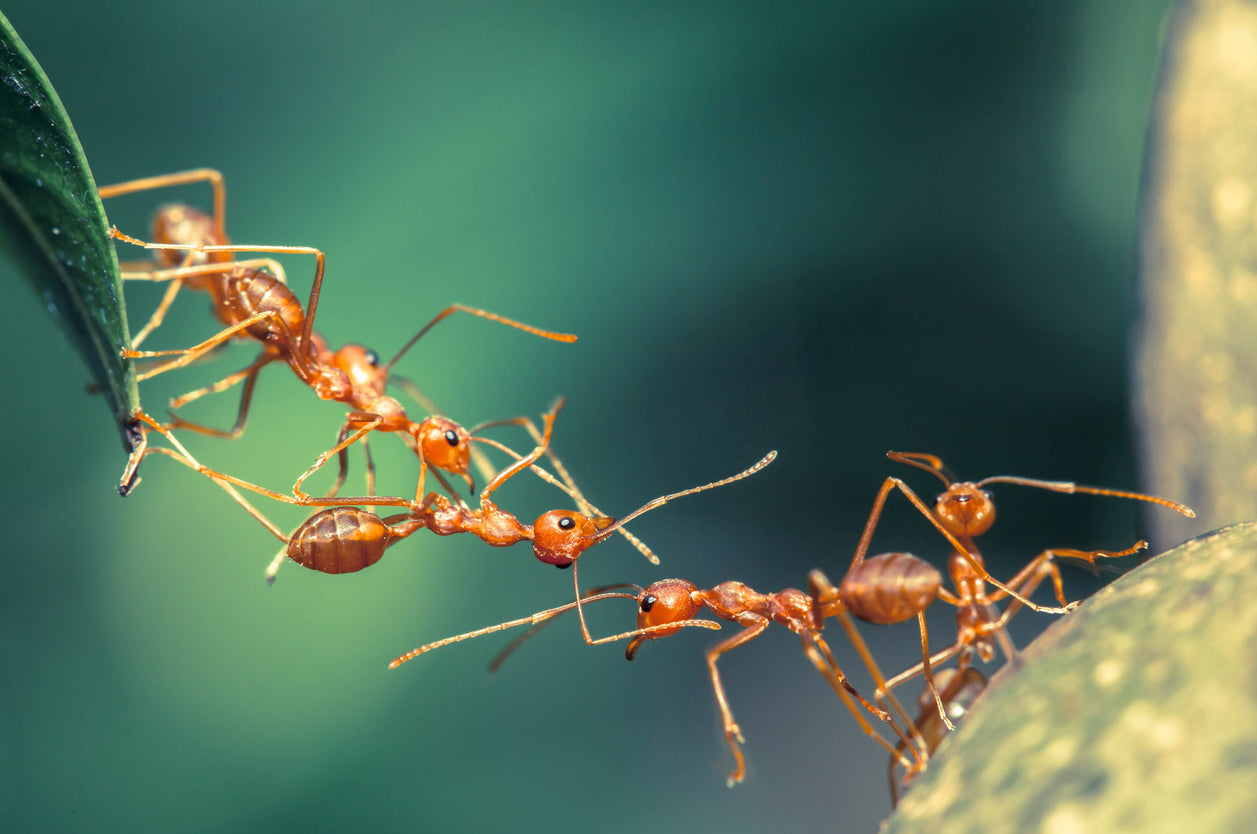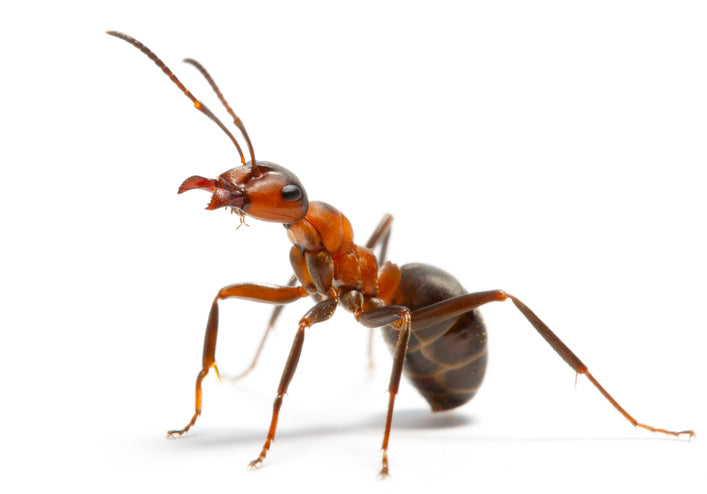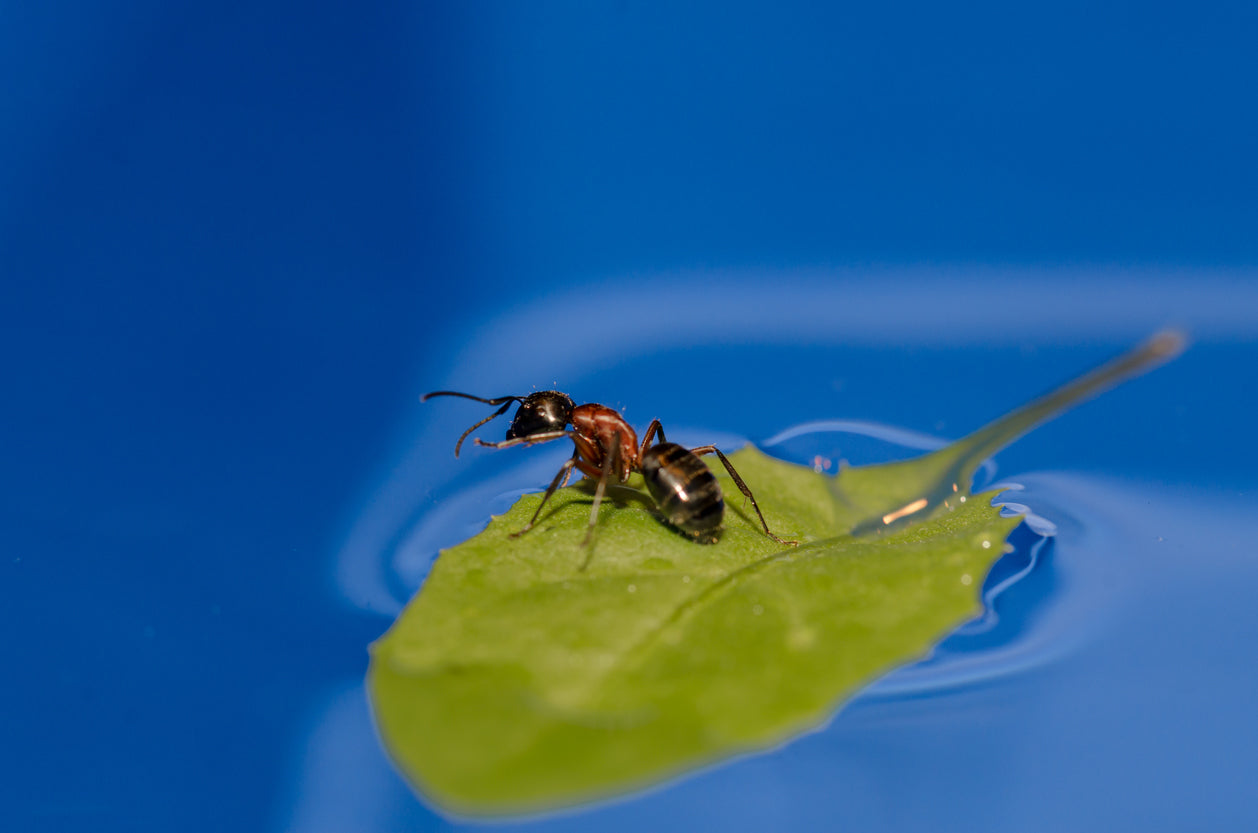Add description, images, menus and links to your mega menu
A column with no settings can be used as a spacer
Link to your collections, sales and even external links
Add up to five columns
Add description, images, menus and links to your mega menu
A column with no settings can be used as a spacer
Link to your collections, sales and even external links
Add up to five columns

Ant Colony Structure and Hierarchy
By Spencer McManamna August 08, 2024 7 min read
Imagine a city of tunnels right beneath your feet! Ant colonies are marvels of natural engineering and social organization. Beneath the surface of soil or within the sprawling branches of trees, these tiny insects orchestrate complex societies with incredible precision. From their elaborate underground nests to their sophisticated foraging strategies, ant colonies reveal a world where collaboration drives success. This article delves into the fascinating world of ant colonies, exploring their structures, colony behaviors, and the remarkable ways they adapt to their environments. Join us on a journey to uncover the secrets behind one of nature’s most organized and industrious societies!
Ant Behavior Within the Colony
The cooperative ant colony behaviors are astonishingly sophisticated. Ant colonies are prime examples of eusociality, a high level of social organization where individuals work together in a highly cooperative and hierarchical system. Eusocial species, including ants, exhibit a division of labor that is integral to their survival and success. In an ant colony, this division is marked by distinct castes: queens, workers, and males. Queens are primarily responsible for reproduction, while workers maintain the nest, forage for food, care for the young, and defend the colony. Males, whose primary role is to mate with the queen, generally have a more transient role in the colony’s life cycle.
The cooperative behaviors within ant colonies are astonishingly sophisticated. Ants communicate through pheromones and tactile signals, which coordinate their activities and enable them to perform complex tasks such as building intricate nests, locating and transporting food, and even engaging in collective defense. Each ant's actions are guided by both instinct and environmental cues, allowing the colony to function as a cohesive unit. This high level of organization and cooperation not only ensures the colony's survival but also allows ants to adapt to a variety of environments, from wet tropical rainforests to arid deserts.
How Many Ants Are In A Colony?
The size of ant colonies can vary dramatically, ranging from just a few dozen individuals to several million ants. On average, many ant colonies comprise several thousand ants, though some species, like the red imported fire ant, can reach impressive numbers of up to 20 million individuals. The sheer size of a colony plays a crucial role in shaping its capabilities and behaviors. Larger colonies often exhibit more complex foraging strategies and can exploit a broader range of food sources, thanks to their ability to deploy more ants for scouting and gathering. In contrast, smaller colonies may be more specialized in their foraging efforts and rely on more efficient, localized strategies.
Colony size also influences reproductive and defensive behaviors. Larger colonies typically have more resources to allocate to reproduction, leading to higher rates of brood production and the capacity to support multiple queens or large numbers of reproductive individuals. This abundance also strengthens their defense mechanisms, enabling the colony to fend off predators and rivals more effectively. Conversely, smaller colonies might invest more heavily in individual defense and careful resource management to ensure their survival.

What Are Ant Castes?
Ant colonies are organized into distinct castes, each with specialized roles that contribute to the colony's overall functioning. The primary castes include the queen, workers, and males. The queen's main role is reproduction; she is the sole egg-laying member whose primary function is to ensure the colony's continuity. Workers, the most numerous caste, handle a variety of tasks essential for colony maintenance and survival. They are responsible for foraging for food, caring for the young, constructing and repairing the nest, and defending the colony from threats. Within the worker caste, there can be further specialization, with some ants focusing on specific tasks like soldiering or nursing. Males, or drones, appear primarily during the reproductive phase, where their sole function is to mate with the queen and then typically die soon after.
Queens
In an ant colony, the queen is the central figure responsible for ensuring the colony's survival and growth through reproduction. She is the only member of the colony capable of laying eggs, and her primary role is to produce offspring to sustain and expand the colony. Queens are typically larger than other ants and possess specialized anatomy for egg production. During her lifespan, which can span several years, she continuously produces eggs that develop into larvae, pupae, and eventually into adult ants. The queen's presence and reproductive activity are vital for the colony's health and stability, as her prolific egg-laying ensures a steady supply of new ants to replace those that die and to support the colony's evolving needs. Her pheromones also help regulate the colony’s behavior, including influencing the development of larvae into specific castes, thus maintaining the social structure and functionality of the colony.
Workers
Worker ants are the backbone of an ant colony, performing a diverse array of essential tasks that sustain and protect their community. Their roles include foraging for food, which involves scouting, collecting, and transporting resources back to the nest. Workers are also responsible for caring for the queen’s eggs and larvae, feeding and grooming them to ensure healthy development. Additionally, they maintain and expand the nest by excavating tunnels, repairing damage, and managing waste. Defense is another critical function as worker ants guard the colony from predators and rivals, often engaging in fierce confrontations to protect their home. Some workers specialize further into roles such as soldiers, who focus on defense, or nurse ants, who care for the young. This division of labor within the worker caste ensures the colony operates efficiently and adapts to changing needs and threats.
Males
Male ants, or drones, play a relatively singular and brief role within the ant colony, primarily focused on reproduction. Their primary function is to mate with the queen during the colony's nuptial flight, a crucial phase in the reproductive cycle. Unlike worker ants, males do not contribute to foraging, nest maintenance, or defense. Male ant lifespans are typically short as they die not long after mating. Their main purpose is to provide genetic diversity and contribute to the colony’s expansion by fertilizing the queen’s eggs. This reproductive role is critical for the continuation of the colony, ensuring that new queens and males are produced to establish new colonies and perpetuate the species.

What Are The Stages of Ant Colony Growth?
From the initial establishment of a new colony to its maturation into a complex and bustling society, each stage of growth is crucial for the survival and success of the colony. Understanding these stages—ranging from the solitary queen's first egg-laying to the emergence of a thriving, multi-generational community—provides insight into the dynamics of ant colony societies.
Founding Stage
During the founding stage of an ant colony, a newly mated queen embarks on a critical phase of solitary establishment. After the nuptial flight, where she mates with males from other colonies, the queen lands and sheds her wings, signaling the start of her journey to establish a new colony. She then seeks out a suitable location, such as a hidden crevice or underground chamber, where she will begin laying eggs. In this initial stage, the queen's primary task is to produce the first generation of offspring, which are usually worker ants. These early workers, known as nanitics, are responsible for the basic tasks of the colony, such as caring for the queen and the brood, foraging for food, and expanding the nest. The success of this founding phase is crucial, as it sets the foundation for the colony's future growth and development.
Growth Stage
During the growth stage of an ant colony, the fledgling community begins to expand and develop more complex structures and functions. As the queen continues to lay eggs, the initial brood of workers, now mature and capable, takes on various roles to support the colony's needs. These workers engage in foraging for food, caring for the queen and new larvae, and enhancing the nest by expanding tunnels and chambers. The colony's size and activity levels increase as more eggs hatch and mature into workers, allowing for greater efficiency in food collection and nest maintenance. Additionally, this stage often involves the establishment of a more organized social structure, with workers beginning to specialize in tasks such as defense or brood care. The growth stage is marked by a dynamic period of rapid expansion and adaptation, laying the groundwork for the colony's continued development and eventual establishment as a completed, self-sustaining community.
Reproductive Stage
During the reproductive stage of an ant colony, the focus shifts from colony growth and maintenance to ensuring the continuation of the colony's lineage. This stage typically occurs once the colony has reached a certain size and maturity. The queen, now well-established and prolific, begins producing winged males and new queens, preparing for the nuptial flight. This flight is a crucial event where these newly mated individuals leave the colony to mate with ants from other colonies, thereby promoting genetic diversity. After mating, the males generally die, while the fertilized queens land, shed their wings, and seek out new locations to start their very own colonies.

How Long Do Ant Colonies Last?
The lifespan of an ant colony differs depending on the species, environmental conditions, and colony health. The colony's lifespan is closely tied to the longevity of its queen, who can live for several years in many species, sometimes even decades. As long as the queen is alive and able to reproduce, the colony can continue to thrive and expand. The colony's overall lifespan is also influenced by factors such as food availability, predation, disease, and environmental changes. Some colonies can persist for many years, with new queens and workers continuously maintaining and changing the colony's structure.
Explore the Behavior of Harvester Ants with Insect Lore
Ready to dig deeper into the hidden secrets of ant colonies? Explore our Ant Farm & Habitat Kits!
Related products
Also in Ants

The Ultimate Guide to Raising Harvester Ants
December 01, 2025 10 min read
Meet the Harvester Ant! This guide will walk you through the process of raising your very own, from setting up your ant farm to feeding, care, and troubleshooting. Whether you’re a teacher running a classroom science project or a parent starting a fun nature activity at home, this is everything you need to know to raise a thriving colony.

What Ants Can Teach Us About Working Together
March 19, 2025 6 min read
Just as ants collaborate, relying on communication and coordination to complete complex tasks, humans thrive when working together, each individual bringing unique skills and perspectives to the table. In this article you will learn all about how ants work together, and what it can teach us about teamwork!

How Long Can Ants Live Without Food?
November 04, 2024 4 min read
You may know about the wide variety of foods ants like to munch on, but have you ever wondered how long they can go without a meal? The answer may surprise you! If you've got an appetite to learn more, let's dig in.

Enter Your Voucher Code Below
If you are experiencing difficulty redeeming your voucher on your desktop, please use a mobile device for a better redeeming experience.

We are unable to combine redemption fees. If you are redeeming 1-5 voucher codes, please complete separate purchases through our website for each voucher. If you are redeeming 6+ vouchers, please email us at customerservice@insectlore.com with your voucher codes and shipping address and we'll send you a custom invoice for payment.
Thank you for Redeeming your voucher!
You redeemed a $title

Don't miss this special one Time Offer.
Check the Box to Add this Special Offer to your Cart

Don't miss this special one Time Offer.
Check the Box to Add this Special Offer to your Cart
It looks like you are an Insect Lore UK/EU customer! You are visiting the Insect Lore USA website.
Click Insect Lore UK/EU website to be redirected to insectlore.co.uk.



